Opening woes
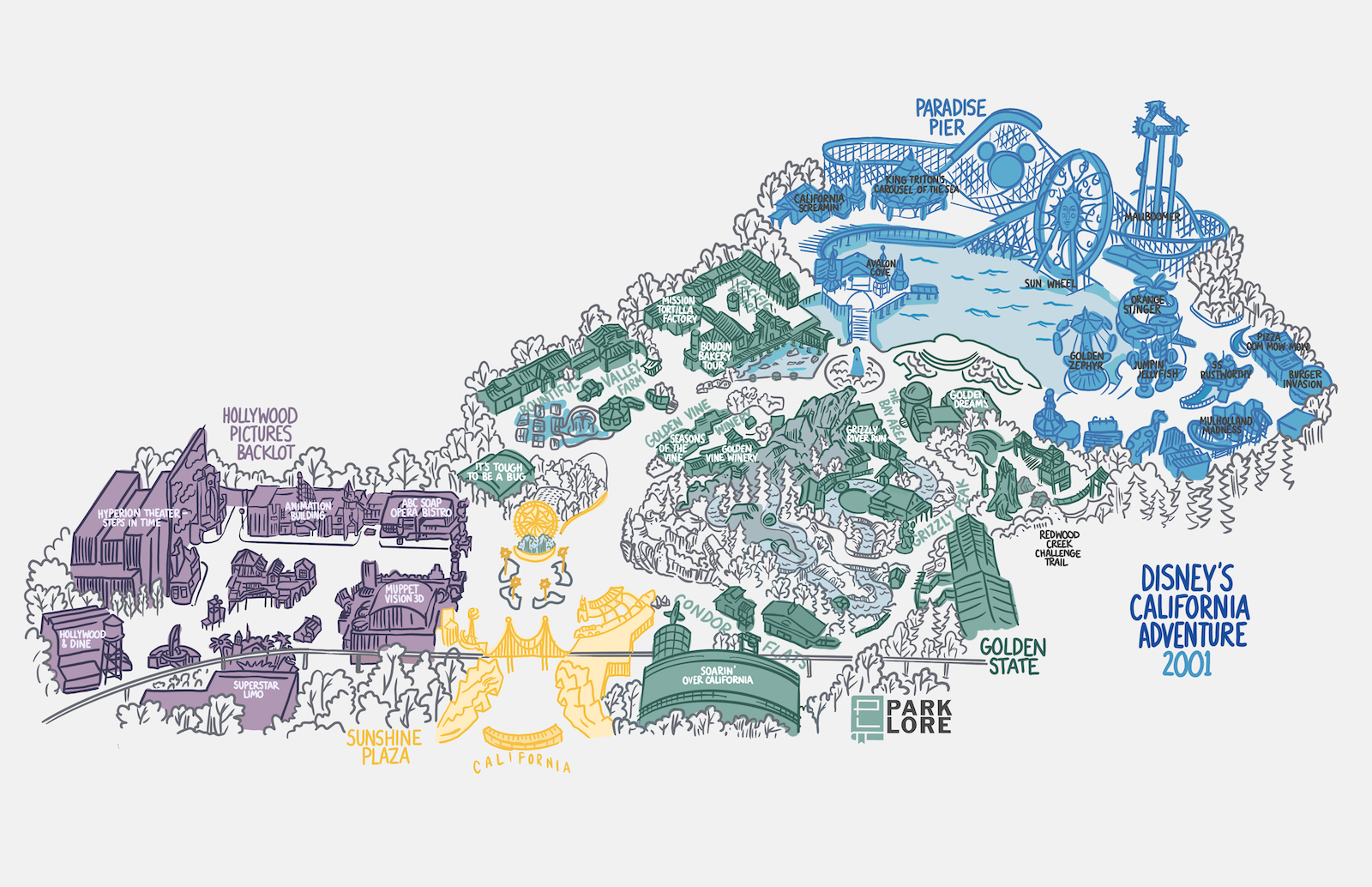
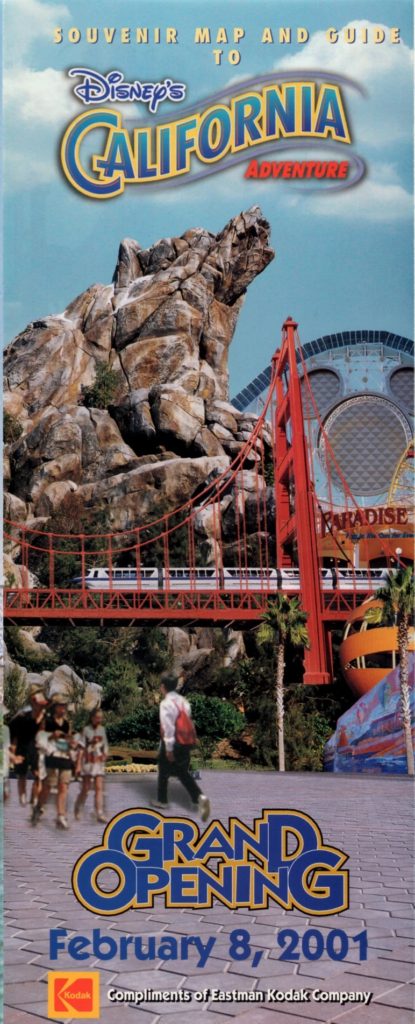
In the lead up to California Adventure’s February 8, 2001 opening, the press reported that Disney expected the park to quickly reach its capacity not just on its opening day, but weekends through the Spring and Summer of 2001 as visitors inevitably rushed to see the new, cool, modern theme park next to Disneyland.
As opening day neared, traffic advisories suggested that the roads around Disneyland (and the dedicated off-ramp from the interstate to the new Mickey & Friends Parking Structure) would likely be at a standstill for miles, with many guests likely to be turned away once the park’s 33,000-person capacity was reached.
But on its opening day, Disney’s California Adventure welcomed just 8,000 guests – less than a quarter of what it was built to hold. Unfortunately, that day would be remembered as a relative blockbuster. Attendance at Disneyland’s second gate fell far, far below even Disney’s already-conservative estimates. Perhaps the first park whose opening had been widely reported through early social media and the blogosphere, poor word-of-mouth had spread and Disney’s California Adventure quickly proved itself to be a major misstep.
By the park’s first summer, Disney officially discounted California Adventure tickets for California residents and character meet-and-greets were brought in to lure locals out of Disneyland. With negative word of mouth spreading, Disney even brought out the big guns – the Lost Legend: The Main Street Electrical Parade – in the park’s first summer. But with so little for families, so few rides, and so few people to fill lines, it was difficult to make a day at California Adventure stretch into the evening to see it.
Then, just seven months after the park opened, the September 11th attacks on New York City brought air travel to a standstill and absolutely sank the tourism industry as a whole. According to an article in the LA Times that October, “California Adventure was expected to attract about 7 million visitors annually, or 19,000 a day. But in the week before the terrorist attack, the park had been drawing an average of about 4,500 per day, according to a Disney official who asked not to be identified.”
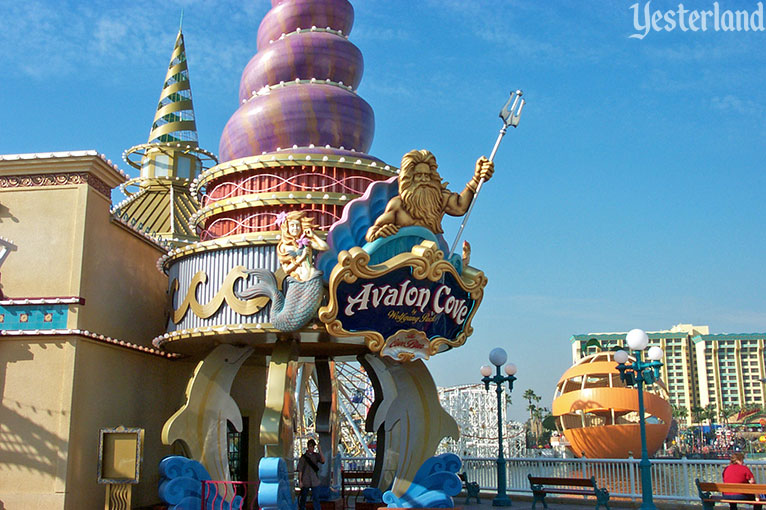
California Adventure’s focus on food had meant that the park had too many places to eat, and too few guests… made worse by a poisonous reputation that scared off sponsors. Before the park’s first birthday, Robert Mondavi pulled out of the Golden Vine Winery (ending his 10 year contract after just 9 months and calling the Disney relationship a $13 million write-off). By that point, Wolfgang Puck had already exited the park, calling the decision “mutual” and leaving Avalon Cove to Disney’s internal team.
When all was said and done, Disney’s California Adventure reportedly drew a total of 5 million visitors in 2001. That sounds like a lot… except than in the same year, Disneyland Park welcomed 12.3 million. Think about it: that means that in its first year – when interest and enthusiasm should be at its peak – only 40% of people who visited Disneyland bothered to see California Adventure, too. Of those who did try out the new park in 2001, Disney’s evaluation allegedly suggested that only 20% reported being “satisfied” or better by the experience.
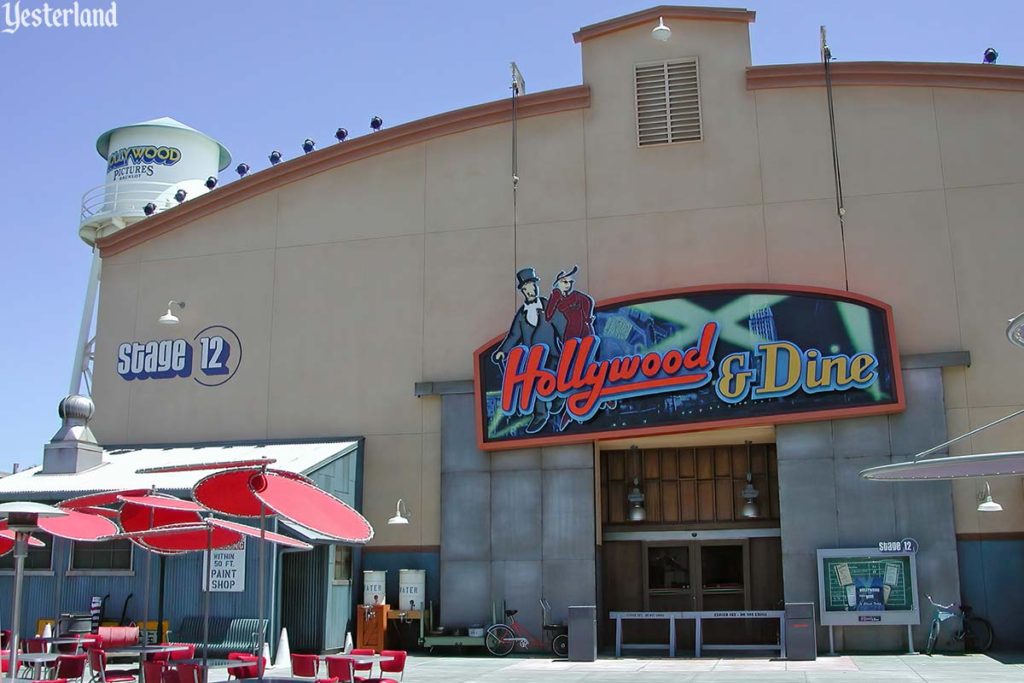
With attendance cratering to never-before-imagined lows, Disneyland executives reeled. When the Declassified Disaster: Superstar Limo closed before the park’s first birthday, Hollywood Pictures Backlot became dead-end ghost town with no rides. As a result, both the Hollywood & Dine indoor food court and the ABC Soap Opera Bistro were closed altogether. Across the park, Disney voluntarily shuttered restaurants to limit expenses. On any given day, more of Disney’s California Adventure appeared closed than open.
Already vastly underperforming expectations, California Adventure’s attendance reportedly fell a staggering 15% in 2002. Not only had California Adventure dashed any hopes of turning Disneyland into an international destination; it wasn’t even able to retain Disneyland’s loyal, local following.
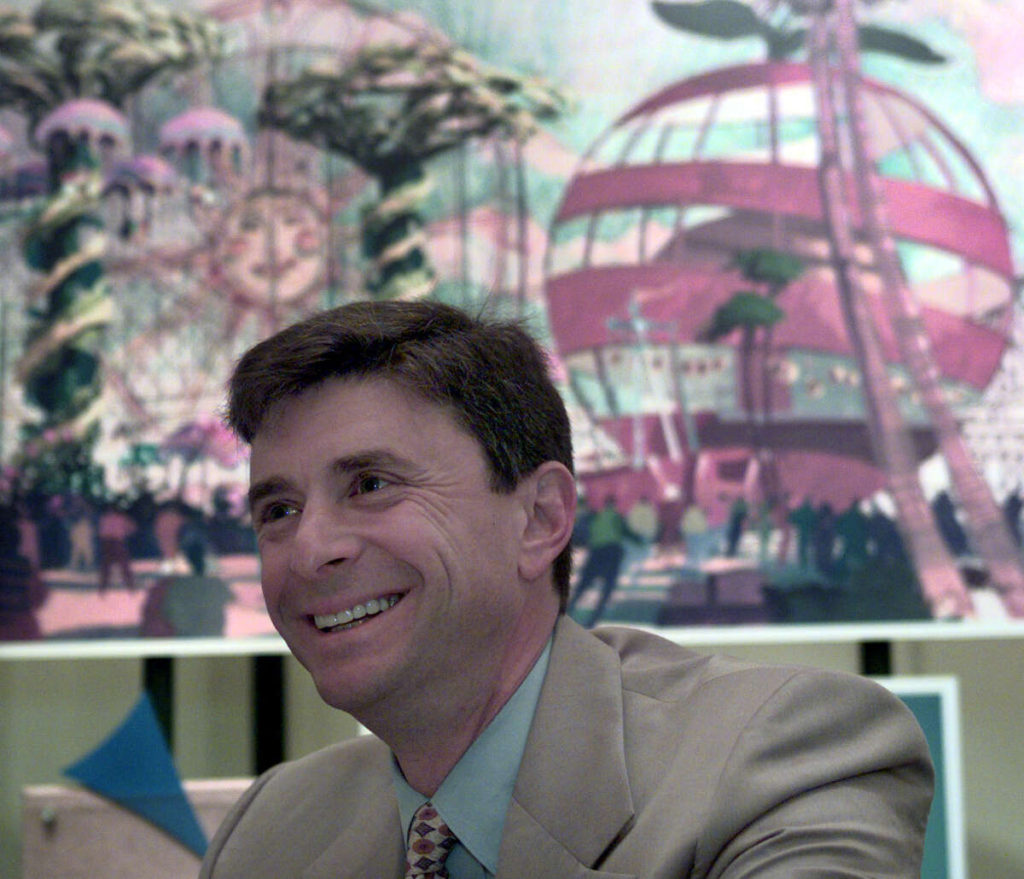
A year after opening the park, Paul Pressler – whose cost-cutting ethos had vastly reshaped Disneyland’s maintenance, operations, hiring, and merchandising – called himself “a proud father” of California Adventure and promised he would not give up on it. A few months later, he quit Disney to become CEO of The Gap (where his “cut costs, slash perks, reduce staffing, defer maintenance, then trumpet short-term financial gains before it all comes crashing down” M.O. was similarly disastrous, ending his tenure after four years.)
Joe Rohde – lead designer on Disney’s Animal Kingdom – later said of the Pressler era that it was “probably the bleakest” time at Imagineering in his memory; “dominated in a forceful way by this: ‘We’re the business guys. We know this; we have data here. The data says this. We’re following this data. You’re doing this because that’s what it says here. This is math.'”
Suddenly, rides Imagineers had wanted to include in California Adventure – but that had been deemed too costly by Pressler, Eisner, and Disney’s other executives – were needed… and fast.
Band-aids
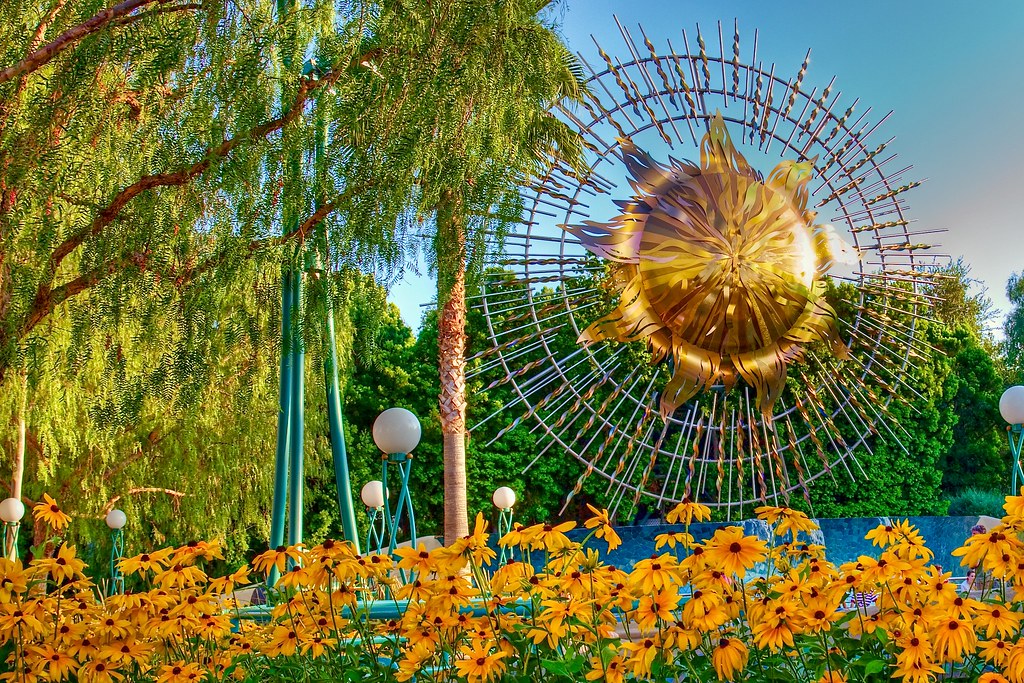
Pretty quickly out the gate, it had to have been obvious to anyone looking that Disney’s California Adventure was – at best – a swing-and-a-miss. But unlike a box office flop that can written off and forgotten, time wouldn’t fix Disneyland’s second gate, and forgetting it wouldn’t be quite so easy. Plans to invest in new rides to draw guests “back” to Walt’s original park were quickly scrapped, with any and all funding, festivals, and sustenance rerouted to California Adventure.
So it’s no surprise that “Plan A” would be to bolster the park in the areas of support it clearly needed most: more characters, more rides, more for kids, and plain-old more-to-do.
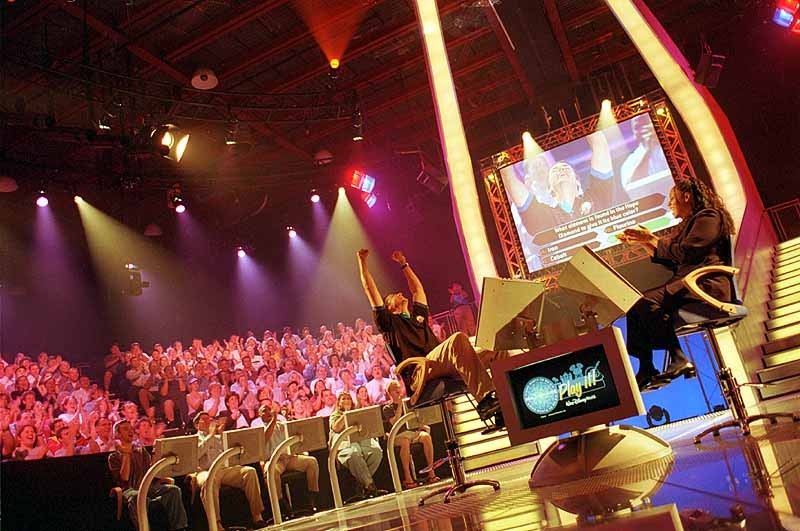
By September 2001 – just seven months after the park’s dismal opening – a brand new Stage 17 soundstage was hastily constructed in the Hollywood Pictures Backlot to contain Who Wants To Be a Millionaire? – Play It!, an interactive, real-time, guest-starring version of the hit ABC game show awarding as its top prize a Disney Cruise Line vacation for four (and otherwise, shirts, lanyards, pins, and baseball caps).
The show lasted at California Adventure only until 2004, which is two years after the primetime game show had ended. But in the early days of California Adventure, the chance to be part of the Millionaire set and ask-the-audience gameplay was a delight that might’ve been worth crossing the Esplanade for, and fully “on-theme” for Hollywood Pictures Backlot. (Disney hasn’t seemed quite sure what to do with Stage 17 or the other cavernous empty soundstages in the land since, which have featured rotating dance parties, retail relocations, and seasonal festivities.)
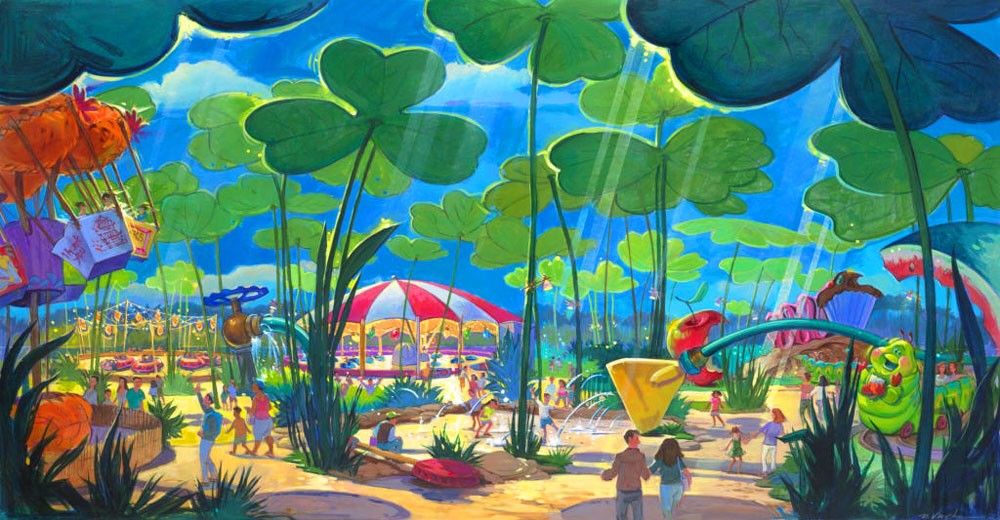
In 2002, the park debuted A Bug’s Land. – a fifth “District” absorbing the existing “It’s Tough to be a Bug” 3D film and the Bountiful Valley Farm exhibit, and expanding it with “Flik’s Fun Fair.”
Pixar’s Lasseter recalled in The Imagineering Story, “[At Disneyland,] you went through a portal into another place, preventing anything from the outside world [from intruding] on your vision. When Disney California Adventure opened, they didn’t adhere to those things. So it just didn’t feel authentic. So when we had the opportunity to do ‘a bug’s land’, Kathy [Magnum, Imagineer] and I said to ourselves, ‘We’re going to make it immersive.'”
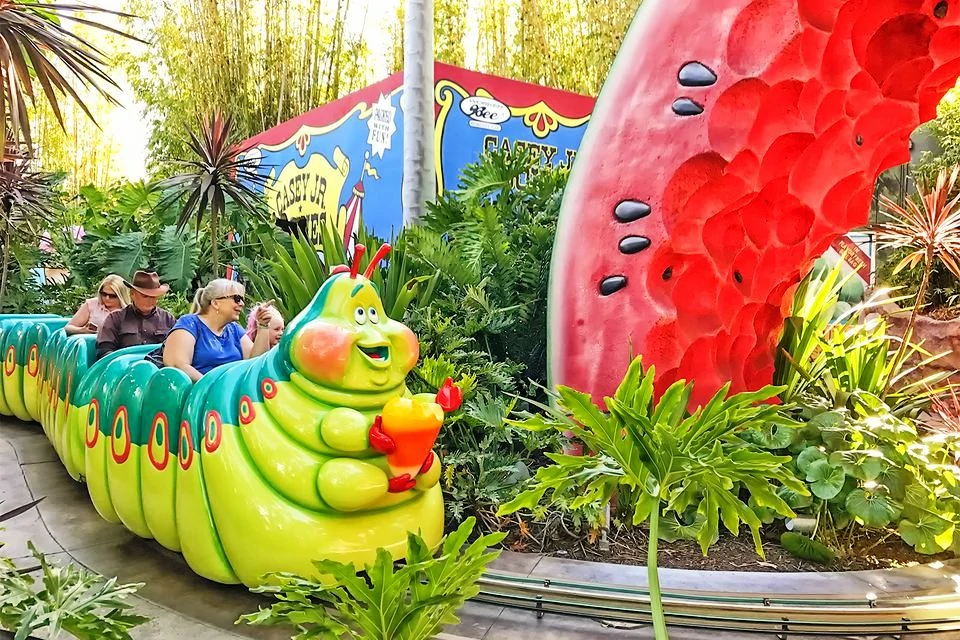
Without a doubt, “a bug’s land” wonderfully presented a “bug’s eye” view of the world – arguably, better than the now-default-shrinking-land, Toy Story Land, does – by placing guests among massive blades of grass, beneath lilting clovers that covered the green, aromatic land in shade. Fireflies served as lamp posts; still-stained Popsicle sticks as benches; and four small, family flat rides – modified teacups, swings, bumper cars, and a train ride – were lovingly wrapped as insect inventions from the Pixar film.
(It was also one of the first steps in the “Pixarification” of Disney Parks that we explored in our Member-exclusive, in-depth Disney·Pixarland Special Feature. Spoiler alert – it was a harbinger of things to come to California Adventure)
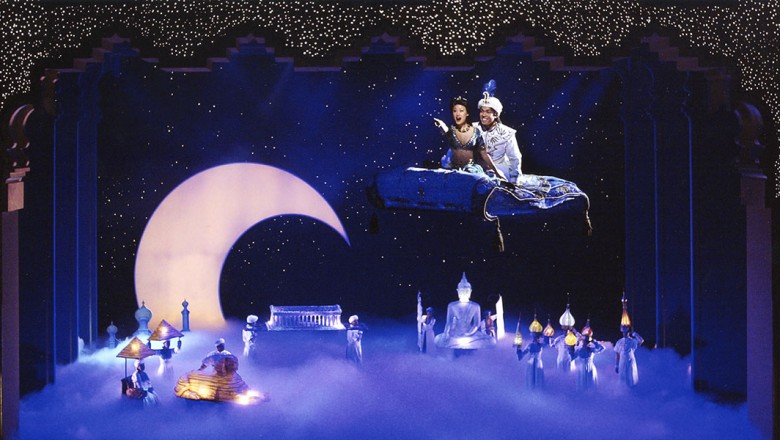
Given that the park’s Hollywood Pictures Backlot was practically a ghost town, it’s no surprise that much of California Adventure’s initial about-face related to development there. In January 2003, the 2,000 seat Hyperion Theater finally found a successful inhabitant by way of Aladdin: A Musical Spectacular. Eschewing theme park standard that shows dare not surpass 25 minutes, the 50-minute, Broadway-style show was a substantial success for the park – arguably, even an “E-Ticket.”
That spring, Playhouse Disney: Live on Stage! opened in the former home of the ABC Soap Opera Bistro, ceding some of the park’s over-extended dining real estate not just to an attraction, but to an attraction for the whole family.
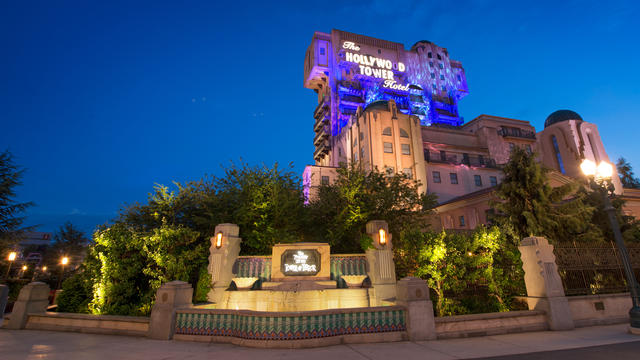
In 2004, the park introduced a new, obvious, and much-needed E-Ticket – The Twilight Zone Tower of Terror. While fans were quick to point out that California Adventure’s new take on the ride was a value-engineered version of the Orlando original (omitting the “Fifth Dimension” scene and using a new ride system, layout, and design), the fact of the matter is that for California Adventure, the addition of the Hollywood Tower Hotel was a clear victory, and an obvious narrative anchor for a park ostensibly based on legends of the Golden State.
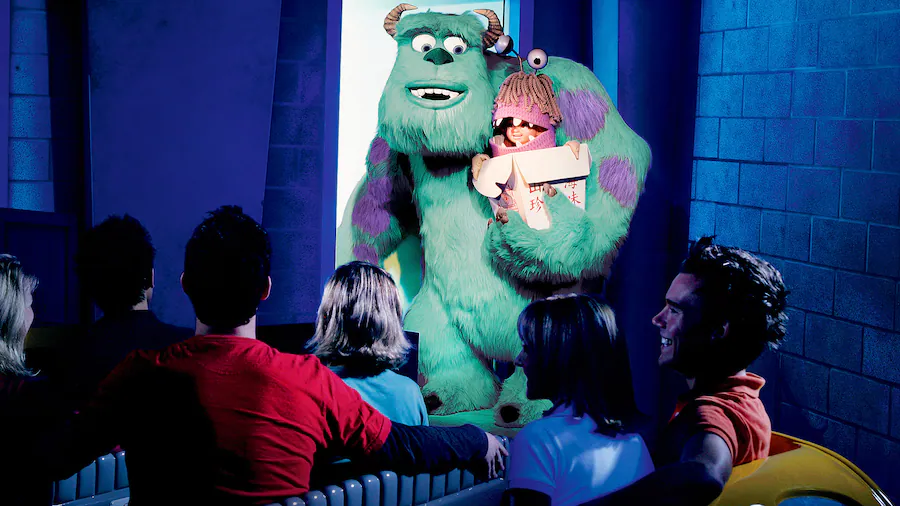
Finally, in 2006, the long-abandoned warehouse containing Superstar Limo (which had sat vacant since its 2002) gained a new inhabitant: Monsters Inc.: Mike & Sulley to the Rescue. Restoring the park’s family dark ride count to one, Mike & Sulley to the Rescue was a sweet, clever addition to the park, providing California Adventure with the modernized equivalent of a Fantasyland dark ride that it so badly needed.
Tap and drag the slider above to compare overlaid maps of Disney’s California Adventure in 2001 and 2006. As the maps show, one-by-one, the piecemeal fixes to the park (primarily in Hollywood Pictures Backlot and via “a bug’s land”) did help give California Adventure more rides, more characters, and more for families to do.
And sure, there’s no denying: Disney’s California Adventure needed those rides. It needed more for families, and more Disney characters, and more immersion, and more custom attractions rather than off-the-shelf rides. But if the “Band-aid” era proved anything, it’s that each attempt to meet those shortcomings ultimately felt like a Band-aid on a broken bone. A dozen one-off, piecemeal E-Tickets couldn’t fix what was really wrong with Disney’s California Adventure because the park’s issues went much, much deeper…
The genetic flaw
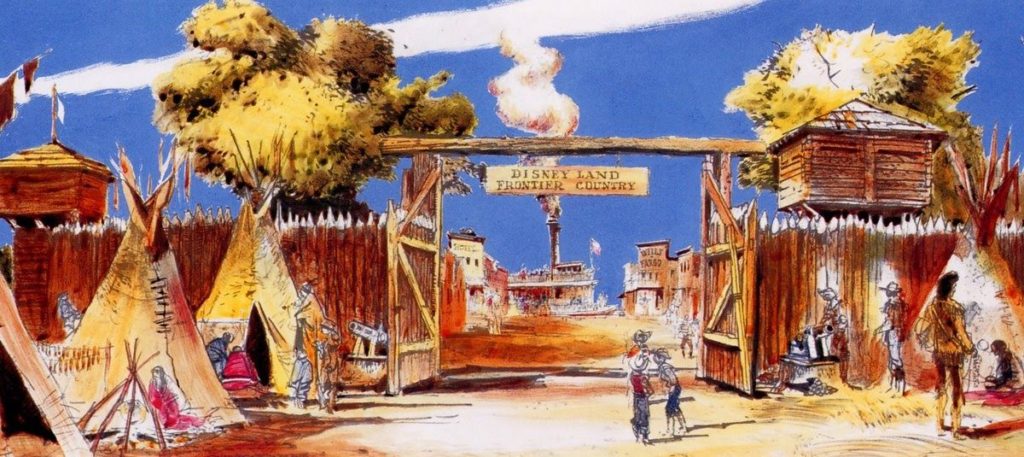
“Here you leave today and enter the world of yesterday, tomorrow, and fantasy.”
When you pass beneath Disneyland’s Train Station and step onto Main Street’s Town Square, you find yourself in a turn-of-the-century small town America not as it really was, but as we imagine it should be. Of course Main Street is “historic,” reflecting a real time and an amalgamation of real places… but no place like Main Street ever existed. You can’t find it on a map. Instead, it exists in our shared, collective consciousness.
When we visit Frontierland, we’re stepping into an Old West town “that never was, but always will be;” a distilled, refracted, and romanticized recreation of a place that doesn’t exist In Frontierland, the real inequities and perils of Westward expansion are washed away, distilling the genre to its core elements of romance, excitement, and heroism. The “lands” of Disneyland are fantasies, yes, but they’re rooted in history; they’re reverent and respectful; they’re dialed up and dreamy, yet they feel not just real, but right.
That’s the not-so-secret ingredient of Disneyland: idealization.
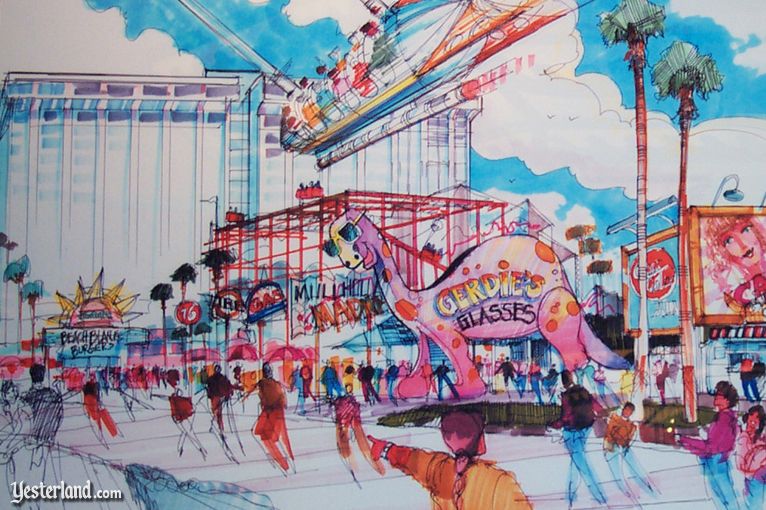
And it’s exactly the rule that Disney’s California Adventure intentionally ignored.
As you’ve no doubt picked up during our editorialized tour, California Adventure’s fatal flaw was the very feature that Imagineers had hoped would be its hallmark: its attitude. California Adventure was so intent on being different from Disneyland – so focused on throwing out the rule book – that its quest for a cool, edgy, modern, 21st century concept created environments where we do not leave today.
At least in 2001, California Adventure did purposefully and precisely the opposite of Disneyland. Rather than whisking guests away to idealized places rooted in history but passes through lenses of fantasy, romance, drama, adventure, and heroism, California Adventure continuously reminded guests that they were merely walking through a pop culture parody of modern California; an oversaturated, primary-color pop-up book; an amusement park. “Too much California, not enough Disney.”
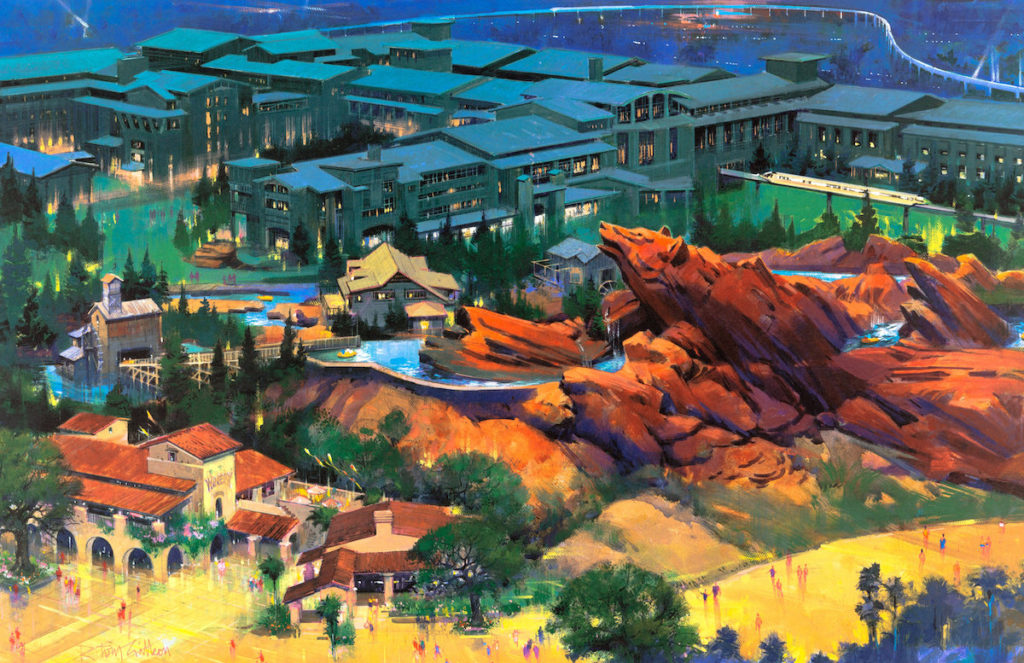
It wasn’t just a matter of adding more rides, more family attractions, and more characters to Disney’s California Adventure. If Disneyland’s beleaguered second gate were ever to fully stand as a counterpart and complement to Walt’s original magic kingdom, it would need to be reoriented at its heart; rewritten in its spirit; reborn in its soul.
And at least in the eyes of then-new CEO Bob Iger and an assembling team of Imagineers, it stood to reason that the ingredients were there… A forested National Park; the streets of Tinseltown; a seaside Boardwalk… It wouldn’t be easy. It wouldn’t quick. And it wouldn’t be cheap… But to fix California Adventure – for good – something big needed to happen.
That’s where our story is heading next, and it’s in an in-depth feature all its own. Make the jump to Disney’s California Adventure: Part II to follow the park’s five year reimagining and walk through the park as it appeared after its re-opening in 2012… Then, we’ll dig even deeper into the park’s still-ongoing transformation to determine whether or not Disney’s making its most costly mistake all over again…

